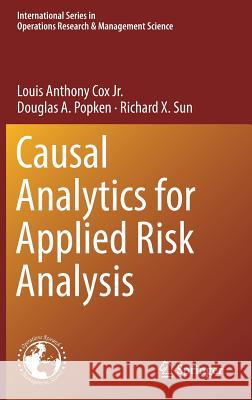Causal Analytics for Applied Risk Analysis » książka
topmenu
Causal Analytics for Applied Risk Analysis
ISBN-13: 9783319782409 / Angielski / Twarda / 2018 / 588 str.
Kategorie:
Kategorie BISAC:
Wydawca:
Springer
Seria wydawnicza:
Język:
Angielski
ISBN-13:
9783319782409
Rok wydania:
2018
Wydanie:
2018
Numer serii:
000052976
Ilość stron:
588
Waga:
1.02 kg
Wymiary:
23.39 x 15.6 x 3.33
Oprawa:
Twarda
Wolumenów:
01
Dodatkowe informacje:
Wydanie ilustrowane











